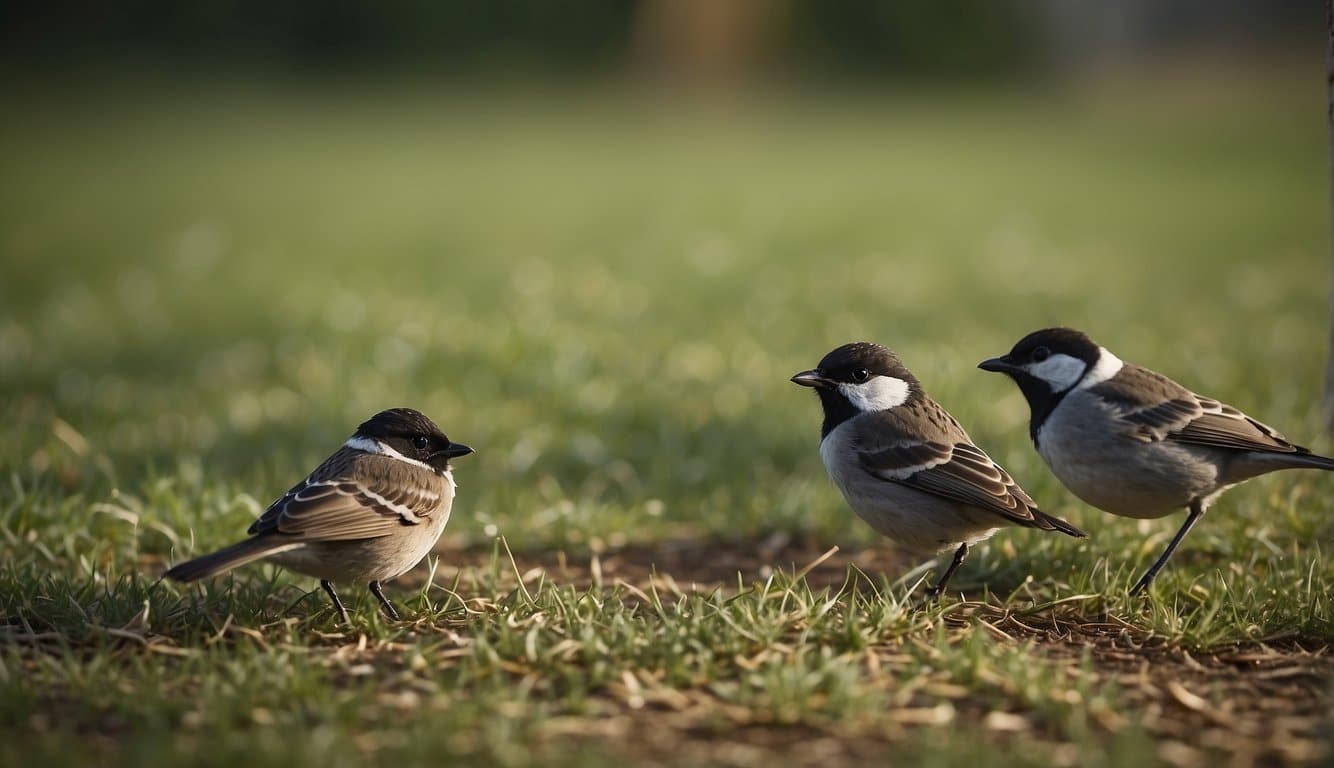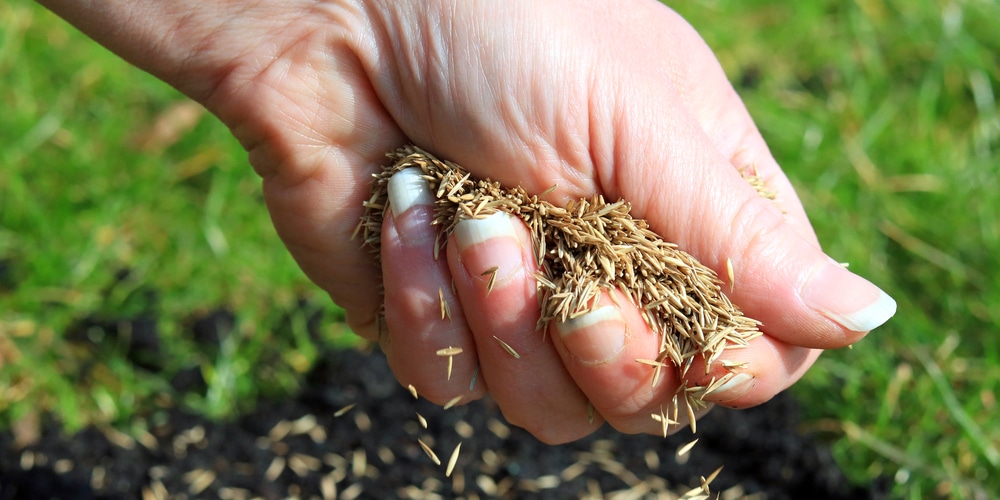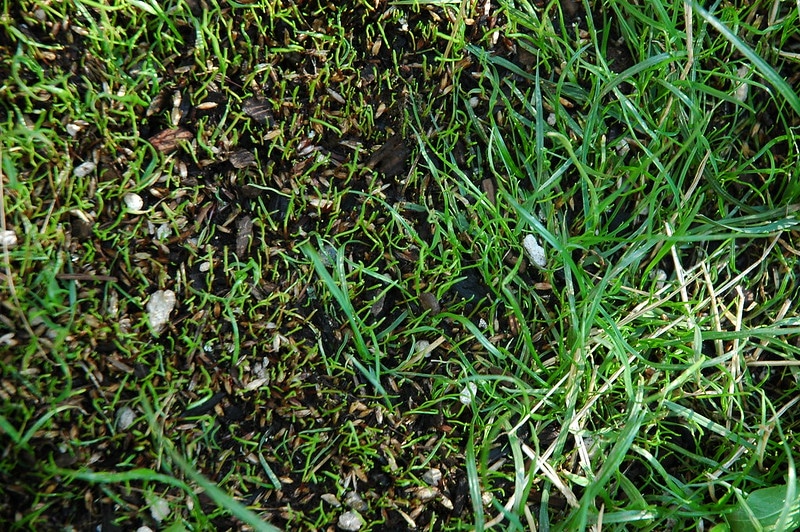Birds Will Eat Your Grass Seed: Here’s What to Do
Birds often see freshly planted grass seed as an easy food source. Knowing their patterns helps protect your seedlings.
Birds usually feed in the early morning or late afternoon. During these times, your vulnerable seeds are most at risk.
Bird Behavior:
- Feeding Times: Focus on morning and late afternoon.
- Preferred Seeds: Birds favor certain seeds over others.
Grass Seed Selection:
- Varieties: Opt for seeds that are less attractive to birds.
- Timing: Sow seeds when birds are less active.
Tips for Seed Selection
- Research: Find seed varieties that birds are less likely to eat.
- Timing: Plant during off-peak bird feeding times.
- Blends: Mix in unappealing seeds to deter birds.
Grass type plays a role as well. Birds might avoid specific grass varieties, like those with a bitter taste or tougher hull.
Look for options less palatable to birds, and consider your sowing schedule to align with times when birds are less likely to be feeding.
- Grass Type Examples:
- Tall Fescue: Tough for birds to crack.
- Kentucky Bluegrass: Sometimes less favored by birds.
Effective Strategies to Deter Birds
Protecting your newly planted grass seed from birds ensures successful germination and a future lush lawn. Implement specific measures to effectively discourage birds from feasting on your seeds.
Using Physical Barriers
- Mesh Netting: Drape a fine mesh or netting over the seeded area to provide a physical barrier. Ensure it’s elevated above the ground to allow grass to grow uninhibited.
- Garden Fleece: Covering seeds with garden fleece not only wards off birds but also aids in temperature regulation and moisture retention.
Implementing Visual and Auditory Deterrents
- Decoy Predators: Strategically place fake owls or hawks nearby. Periodically move these decoys to maintain their effectiveness.
- Reflective Objects: Hang aluminum foil strips, CD discs, or specially designed reflective tape around the seeded area to disturb birds with reflected light.
Employing Biological Control Measures
- Companion Planting: Integrate plants that birds find unattractive or that attract other wildlife to deter birds from the grass area.
- Natural Predators: Encourage the presence of birds’ natural predators in your garden, like owls and hawks, by installing nesting boxes at a distance from your seeded area.
How to Protect the Grass Seed
Proper preparation and planting are essential for protecting your grass seed from birds. To enhance the survival rate of your newly planted seeds, follow these steps:
- Rake the Soil: Create a soft bed for the seeds to lie in. Use a rake to break up large clods and smooth out the soil, ensuring good seed-to-soil contact.
- Seed Coverage: After sprinkling the seeds, lightly rake them into the upper ⅛ inch of soil. This coverage helps in camouflaging them from birds.
- Mulching: Apply a thin layer of mulch or straw over seeded areas to conceal them. Ensure the mulch is not too thick to allow for seed germination.
- Soil Toppers: Alternatively, a fine layer of soil or peat moss can be used. This not only hides the seeds but also retains moisture for better growth.
- Physical Barriers: Set up a net or a light burlap over the seeded area to create a barrier. Secure the edges so it stays in place.
- For a makeshift option, stretch twine or fine wires above the seedbed to deter birds.
- Commercial seed mats or seeding blankets are also effective. They offer protection and improve seed germination rates.
- Decoy Predators: Positioning a realistic decoy, such as an owl or hawk, near your seeded area can scare off potential seed predators.
Maintaining and Monitoring Seed Growth
After you’ve planted your grass seed and taken steps to protect it from birds, your job isn’t over. The key to ensuring the success of your lawn is a proactive approach in regularly inspecting your garden and adjusting your protection methods as needed.
Regular Garden Inspections
- Schedule Inspections: Aim to inspect your lawn at least once a day. This helps you monitor seed germination and spot any areas where birds might be feasting.
- Look for Signs of Disturbance: During your inspections, look for scattered seeds, bird droppings, or patches where birds have removed the mulch.
Adjustments to Protection Methods Based on Observations
- Evaluate Effectiveness: If you notice bird activity, assess the protection measures you’ve implemented—perhaps it’s time to adjust or add new deterrents.
- If mulch is scattered, reapply it more securely.
- When using decoys, move them regularly to different locations to maintain the element of surprise.
- Optimize Conditions for Growth:
- Ensure the area remains moist for seed germination but not oversaturated.
- If bird deterrents seem to impede grass growth, such as blocking sunlight or water, reposition them for adequate exposure.
Frequently Asked Questions
When it comes to maintaining a lush lawn, preventing birds from feasting on your freshly planted grass seed is crucial. Below are answers to some common questions that can help you keep your seeds safe and ensure successful grass growth.
What methods deter birds from consuming newly sown grass seed?
- Create physical barriers like fencing with twine or fine wire netting.
- Apply a light cover of mulch or soil to hide the seeds from birds’ view.
- Set up decoy predators such as fake owls or hawks to intimidate birds.
- Utilize reflective objects or streamers that create movement and deter birds.
Can fertilizer applications on grass seed prevent birds from eating it?
Using fertilizer alone is not a reliable method to deter birds. It’s important to combine fertilizing with other bird-repellent strategies such as placing netting over the seeded area.
Which bird repellent is most effective for protecting newly planted grass seed?
The effectiveness can vary, but these strategies have proven useful:
- Netting can physically block birds from accessing seeds.
- Ultrasonic bird repellents emit sounds that are unpleasant to birds.
- Reflective tape, scarecrows or fake predators can frighten birds away.
How can I safeguard my freshly seeded lawn from hungry birds?
- Consider covering the seeded areas with straw or a fine layer of soil to make them less visible.
- Install a motion-activated sprinkler to startle and scatter approaching birds.
- Offer an alternative food source away from the seeded area to distract birds.
What are the best practices for planting grass seed to minimize avian interference?
- Sow grass seed promptly before birds notice, and water the area well.
- Cover the seed lightly with topsoil or compost to disguise it.
- Time your planting to avoid peak bird feeding times, usually early morning and late afternoon.
Is straw an effective covering to protect new grass seed from birds?
Yes, a moderate application of straw is an effective way to conceal grass seed from birds without impeding growth. It offers concealment and protection.
Last update on 2025-06-06 / Affiliate links / Images from Amazon Product Advertising API





